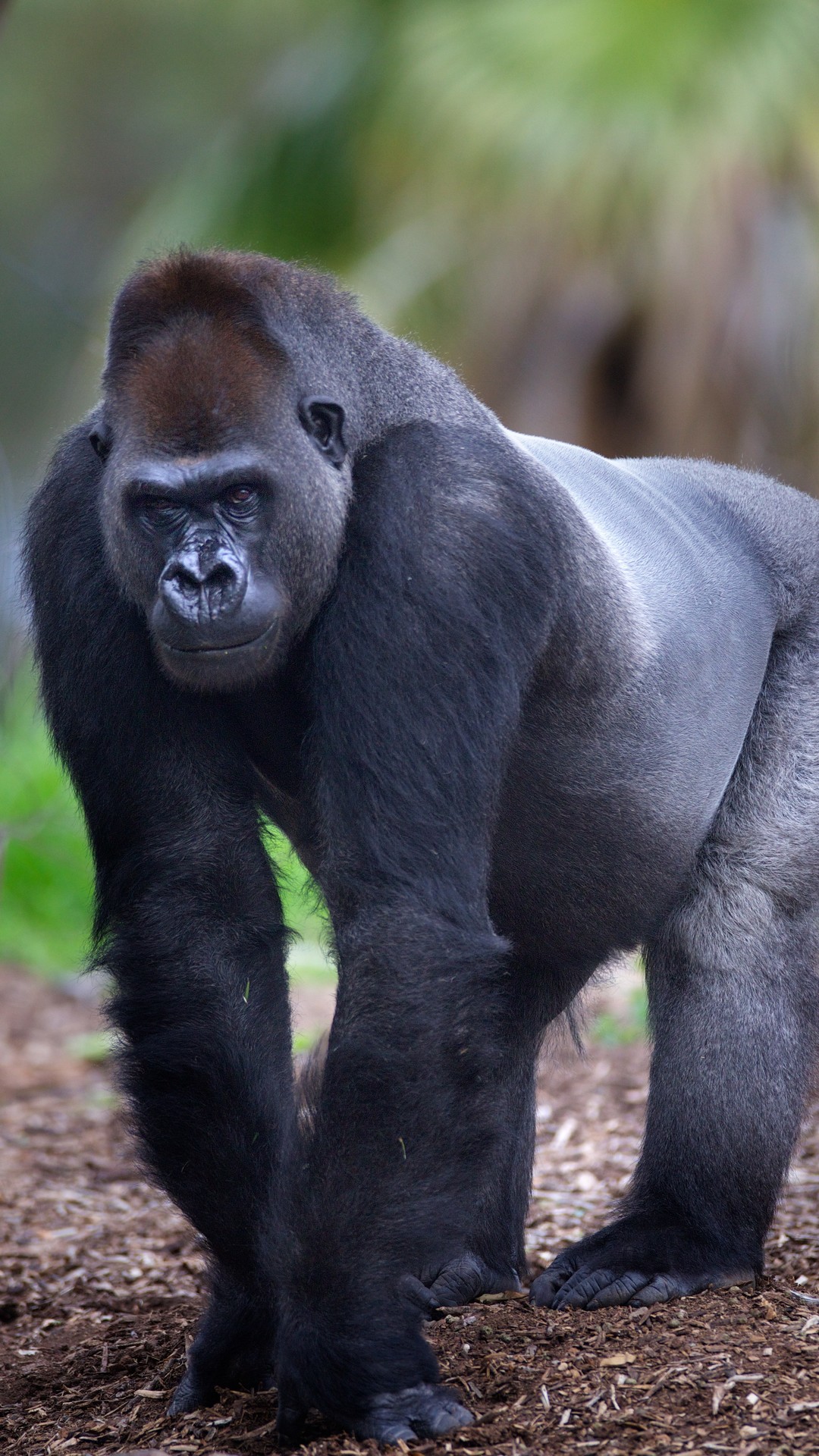Western Lowland Gorilla
Western Lowland Gorillas live in troops of up to 30 animals. They are native to Angola, Cameroon, the Central African Republic, the Congo, Equatorial Guinea and Gabon.
This critically endangered animal is vulnerable to habitat loss from logging and illegal mining, hunting, and human-borne diseases. It’s not known how many remain in the wild, but their numbers are decreasing.

The Zoo is home to a group of three bachelors: silverback Motaba, and his two sons Yakini (the older bossy one) and Ganyeka (the cheeky one). Werribee Open Range Zoo is an important regional male holding facility, and Motaba has fathered five young as part of an international breeding program.
Werribee Open Range Zoo provides people with a rare opportunity to learn more about the plight of wild gorillas, including the catastrophic impact of coltan mining (a mineral used to make mobile phones).
Zoos Victoria’s recycling campaign, They’re Calling on You, supports the Gorilla Doctors in conserving Africa’s primates.
Western Lowland Gorillas are usually led by one dominant silverback male, though in large groups there can be more silverbacks.
These include younger, non-dominant males, who may eventually move off and live alone. Just like us, gorillas make many sounds to communicate with each other.
Listen closely and you'll hear them grumble, giggle, grunt, and cough.
Facts about gorillas
- Young gorillas are very playful and love to tickle and chase each other. At the Zoo they play with special gorilla-proof toys.
- When gorillas are upset or threatened, they show it by coughing.
